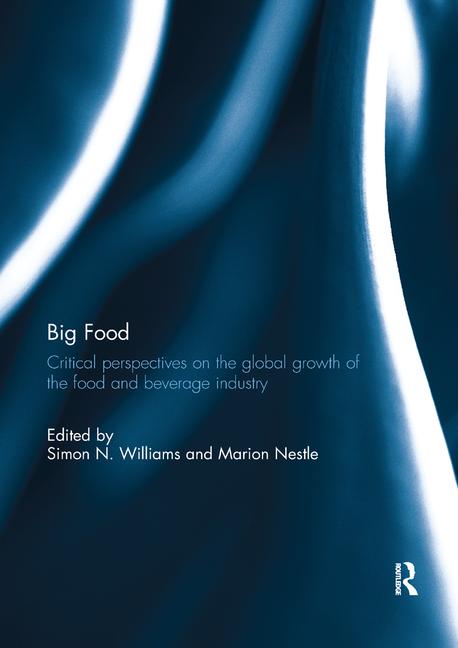Plant Extracts: The Original Food Additives
Ginny Bank, Contributing Editor
October 2011/NutraSolutions -- In 399 BC, the Greek philosopher Socrates was executed by drinking an infusion of the poisonous hemlock plant. In ancient Egypt, Cleopatra used henbane extract to dilate her eyes and make her appear more alluring. Also in Egypt, red fabric found in the tomb of King Tut contained alizarin, a pigment extracted from the roots of the madder plant. While such historical accounts documenting human use of plant-based extracts can be traced back over 3,000 years, their use is possibly as old as civilization itself. From the very first Chinese dynasties, Mesopotamia and ancient Greece, and westward to the empires of Mesoamerica, early civilizations had a surprisingly sophisticated understanding of botanicals and their extracts, especially for use as medicine. Flowers, fruits, roots, bark and leaves of plant material were extracted by various techniques to concentrate not only their therapeutic properties, but also their pigments, aromas and flavors. The simplest method of extraction, used for plants that have high oil content, was the expression of the essential oils. Other techniques included steeping the plant part in water to make an infusion (also known as a tisane) or mashing them and boiling in water to make a decoction. This method was also used to make natural dyes, sometimes boiling the decoction for days to concentrate the pigments further. Elixirs were produced by extracting the plant parts in alcoholic beverages to dissolve the active components.
Today, the use of plant extracts to flavor, color and improve health are not that different from ancient times. Even the extraction methods are fundamentally the same. And, with hundreds, if not thousands, of years of traditional use behind many plant extracts, their safety (and often their efficacy) has been well-documented. Even so, when one takes into account the massive number of plant-based extracts used in traditional medicinal systems, such as Ayurveda and traditional Chinese medicine, very few are approved for use in foods or have Generally Recognized as Safe (GRAS) status. This may be changing, as self-affirmation of GRAS status for such ingredients is steadily increasing. Within the last 18 months alone, a number of extracts received GRAS status through self-affirmation, with or without FDA notification. (See sidebar “How Do Ingredients Get GRAS Status?”)
GRAS Plant Extracts for Health
Most all of the plant extracts that recently obtained GRAS status may offer health benefits to functional food applications. For example, an extract of unroasted green coffee beans standardized to highly available antioxidant compounds, such as chlorogenic acid, has supporting clinical science for applications in weight management1 and blood pressure maintenance2,3. Animal studies with green coffee bean extract have also shown a blood glucose-lowering effect.4 A black pepper extract containing piperine has been shown to have natural thermogenic activity5 and enhance nutrient absorption of phytochemicals, vitamins, amino acids and minerals.6 An extract of Panax ginseng also acquired self-affirmed GRAS status in 2010. Clinical studies using Panax ginseng extracts, which have been used in traditional Chinese medicine as far back as 200 AD, support their use for enhancing immune health, helping to maintain healthy blood sugar levels and counteracting fatigue.7 Also in 2010, the FDA issued a letter of no objection to the GRAS notification of a wheat bran extract rich in cell wall-derived arabinoxylan oligosaccharides (AXOS), natural soluble fibers with potent prebiotic benefits and strong antioxidant activity.8 Other plant extracts with new GRAS status include a purified marigold extract for lutein fortification and a certified organic citrus extract, for use as an antioxidant supplement.
One of the largest lists of GRAS botanical extracts is called the “prior sanctioned” list and can be found in 21CFR182.20. This list includes over 150 plants, mainly culinary herbs and their extracts used mostly as flavors, such as vanilla, lavender and mint (see sidebar “Plant Extracts for Flavor”). Since this list was compiled, many of these extracts have since been shown to also have health benefits and could possibly be used in foods for that second purpose. For instance, tea (black, green and white tea) and pomegranate extracts are well-known antioxidants. Cinnamon extracts may help support healthy glucose levels, and ginger extracts can provide digestion support. Plant extracts not found in 21CFR182.20, but that have had GRAS status for a number of years, include tomato extract (for lycopene fortification), grape seed extract (as an antioxidant), arabinogalactans extracted from larch tree (for immune and digestive health) and extracts of the Indian edible plant Caralluma fimbriata (for weight management). In addition, extracts derived from common fruits, such as apple, blueberry and cranberry, are considered safe for use in food products and are often seen in functional beverages.
A Garden of Color
The use of plant extracts for coloring purposes also must comply with certain regulations. Food colors made from natural sources are exempt from “certification,” which simply means they do not need to meet the strict specifications for purity required for man-made certified colors. However, the regulations for naturally derived colors are still fairly rigid. It may be specified from which plants or plant parts they can be made; how they can be made; and, in some cases, where they can be used.
The FDA recognizes only a few specific plant extracts as “colors exempt from certification.” Found in Part 73 of the Code of Federal Regulations, these include grape skin and grape color extract; the difference between the two being that grape skin is only extracted from the skin of grapes left over after pressing, and grape color extract is an aqueous extract derived from the precipitated lees (the insoluble material that separates during the storage) from Concord grape juice. The majority of other specified plant-based colors are produced by extracting the red, orange or yellow carotenoid pigments from plants. These include carrot oil, tomato lycopene extract or concentrate, and turmeric and paprika oleoresin.
Technically speaking, all of these are oleoresins –- naturally-occurring mixtures (oils and resins) produced by extracting with an organic solvent, such as hexane, acetone or ethyl acetate. There are no restrictions for using any of these specified plant extracts. There are two additional carotenoid-based plant extracts manufactured by extraction with organic solvent. Tagetes (Aztec marigold) and corn endosperm oil are both manufactured by extracting with organic solvents, but are only allowed to be used to color chicken feed (and, indirectly, the chicken and its eggs). The FDA also allows “fruit and vegetable juices” to be used to color foods. It may be argued these also can be considered “extracts,” because they may be prepared by infusing dried fruits or vegetables with water (but only with water).
This is the category of plant-based colors that is experiencing explosive growth, probably for two reasons. First, there are so many colorful fruits and vegetables, and the beautiful assortment of colors made from their juices has significantly expanded the palette beyond the few extracts listed in 21CFR Part 73. Second, with the FDA recommending further studies on the effect of certain artificial colors on behavior problems, like hyperactivity in children, food manufacturers are seeking natural, label-friendly alternatives. For parents, spinach, purple carrot, red radish, blue corn and purple potato juices have much greater appeal on food labels. [Editor’s note: For more information on the regulatory aspects of food coloring, see “Coloring Options” by contributors from the Burdock Group in the July 2010 issue of Prepared Foods or at http://tinyurl.com/3wfa86j.]
How Sweet They Are
Lastly, two plant extracts have made it through the FDA GRAS notification system, causing the biggest shake-up in the sweetener market since FDA’s approval of sucralose in 1998. At this writing, seven extracts of stevia have received an “FDA has no questions” response to their GRAS notification, and five notifications are still pending. These numbers also do not reflect the numerous brands of stevia extracts that have gone the GRAS self-affirmation route, without notifying the FDA.
The FDA has also responded favorably to two GRAS notifications for extracts of the Asian fruit luo han guo (Siraitia grosvenorii), the Asian fruit whose extract is 300 times sweeter than sugar. The official intended use is as a sweetener and flavor enhancer of foods, excluding meat and poultry.
Of course, there are also hundreds of plant extracts with established therapeutic effects for the dietary supplement market, some with potential to become GRAS, as their safety is established. However, many of these herbal remedies are inherently bad-tasting, and, even if they obtained GRAS status, it would be unlikely to find them in foods at efficacious levels. In the meantime, if one wants to benefit from many other popular plant-based extracts, like milk thistle, ginkgo biloba and goldenseal (bitter as they may be), swallowing a pill is a good alternative. NS
References:
1. Oguri K, et al. 2004. 8-week clinical study on green coffee bean extract on women with mild obesity. Unpublished manuscript. Oryza Oil and Fat Chemical Co.
2. Kozuma K, et al. 2005. Antihypertensive effect of green coffee bean extract on mildly hypertensive subjects. Hypertens Res. 28(9):711-718.
3. Ochiai R, et al. 2004. Green coffee bean extract improved human vasoreactivity. Hypertens Res. 27(10):731-737.
4. Henry-Vitrac C, et al. 2010. Contribution of chlorogenic acids to the inhibition of human hepatic glucose-6-phosphatase activity in vitro by Svetol, a standardized decaffeinated green coffee extract. J Agric Food Chem. 58:4141-4144.
5. Okumura Y, et al. 2010. Adiposity suppression effect in mice due to black pepper and its main pungent component, piperine. Biosci Biotechnol Biochem. 74(8):1545-9.
6. U.S. Patent 5,536,506. Use of piperine to increase bioavailability of nutritional compounds. July 16, 1996.
7. Thorne Research. 2009. Panax ginseng monograph. Alternative Medicine Review. 14(2):172-176.
8. Broekaert WF. 2011. Prebiotic and other health-related effects of cereal-derived arabinoxylans, arabinoxylan-oligosaccharides and xylo-oligosaccharides. Crit Rev Food Sci Nutr. 51(2):178-94.
| SIDEBAR: Plant Extracts for Flavor |
|
The most common use of plant extracts in foods is for flavor. Another large list of plants that can be extracted for flavor is found in 21CFR172.510. This list specifies natural flavoring substances (including extracts) that are allowed to be used “in conjunction with flavors.” While some plants on this list may sound familiar, like hibiscus, aloe and guarana, the majority are not well-known, such as cubeb (Java pepper) and Canadian snakeroot (wild ginger). Many of the plants listed in this CFR are limited in use to alcoholic beverages.
|
Looking for a reprint of this article?
From high-res PDFs to custom plaques, order your copy today!








